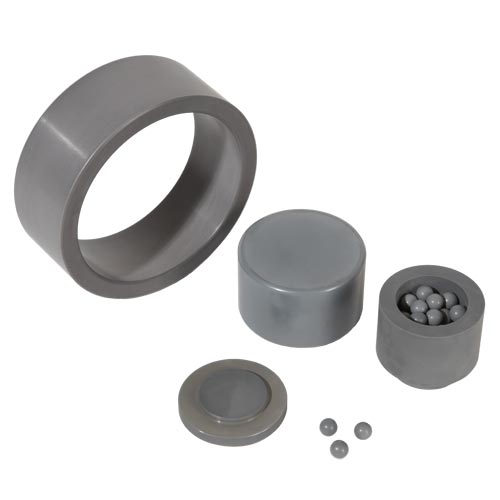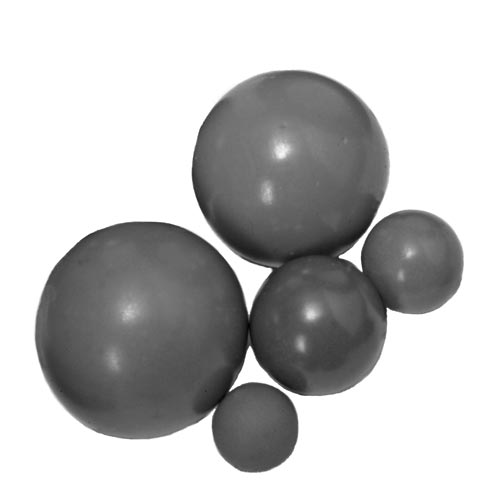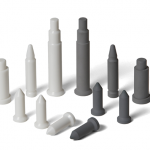The grinding process is an age-old method that hasn’t changed much with time. Whether you are dealing with feed grinding or surface grinding, the same basic principles apply. Hard abrasive media is used to grind material down to finer consistencies, or to remove material for an optimal surface finish. This applies whether you are looking to achieve the ideal particle size for specific analytical methods or to prepare homogenous powders for further downstream processing.
That isn’t to say that abrasive applications haven’t advanced. Engineers are now equipped with extremely hard-wearing cutting tools, grinding wheels, blast cabinets, and small-scale homogenisers equipped with extremely high-performance ceramic grinding media.
The type of milling media used is one of the most important parameters to consider for abrasive applications. In cutting and grinding, you may be dealing with bonded abrasives like immobilised silicon carbide cutting grains. Shotblasting applications use granular abrasive blasting media. But so-called internal grinding use either glass beads, steel, or technical ceramics to crush and grind samples.
In this article, International Syalons will take a look at some of the different grinding setups before comparing specific milling media compositions.
Mill Configurations: Batch Vs. Continuous Processing
The main differentiating factors between one grinding method and another are: how that force is applied, how samples are loaded into the system, and the composition of the milling media used to physically break materials apart. These are largely determined on a market-to-market basis. Small-scale analytical grinding may be done by hand, while industrial-scale processing is typically mechanised. Some samples are placed into the milling chamber in batches, others are recirculated into the system in a continuous flow.

Key Properties of Milling Media
Selecting the right milling media is less about the scale of production and more about performance. Steel alloys are readily available with few manufacturing considerations to bear in mind when creating uniform spherical shapes. As a result, carbon, chrome, and stainless steel grades are among the most common materials used in the final stages of various grinding applications.
Sphericity is important is it guarantees the greatest uniformity in particle size distribution (PSD), ensuring high degrees of powder homogeneity. But the most important properties are density and hardness. Microscopic porous structures can cause volumes of sample media to be retained or represent a point of weakness which increased the rate of failure. Likewise, hardness also determines the wear-resistant properties of a part, thus its longevity in abrasive applications. Chemical composition is also important, particularly in applications where contamination is scrutinised at the lowest possible levels (chemicals, pharmaceuticals, etc.).
Though steels seem like the natural best fit for a wide cross-section of abrasive applications, advances in technical ceramics manufacturing have yielded superior products.

Benefits of Technical Ceramic Milling Media
At International Syalons, we have manufactured a wide range of grinding and milling media for both analytical and preparative applications. Based on a proprietary silicon nitride (Si3N4) derivative, our Syalon 101 abrasive media dramatically outperform steel alloys in terms of milling efficiency. They have also demonstrated significantly reduced weight losses over time compared to alternative technical ceramics, suggesting significantly extended service length and reduced sample contamination.
If you would like more information about our ceramic milling media, simply contact a member of the International Syalons team today.


